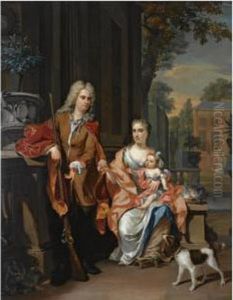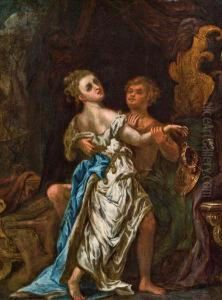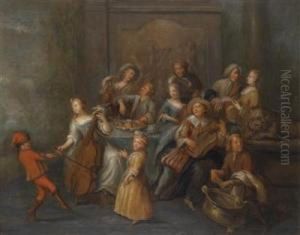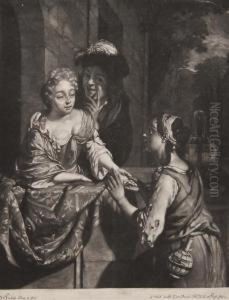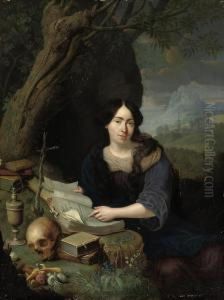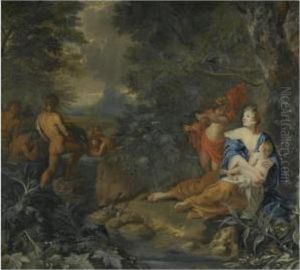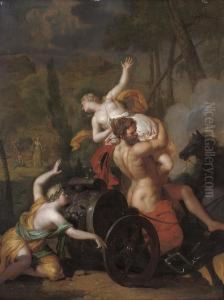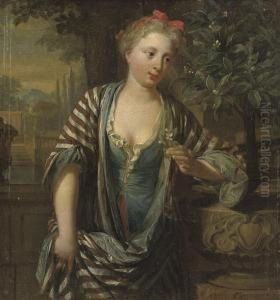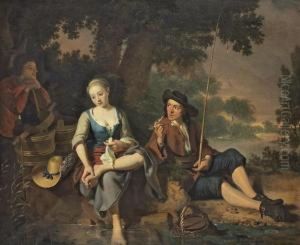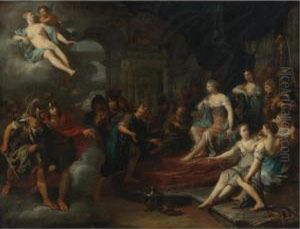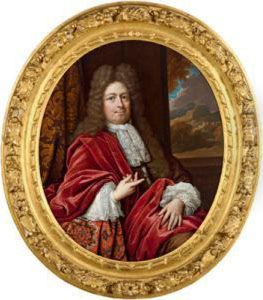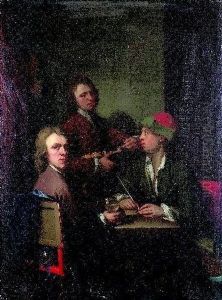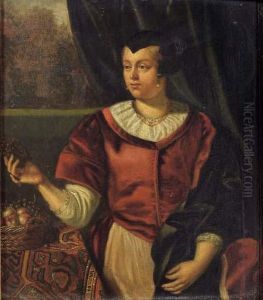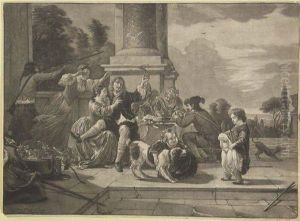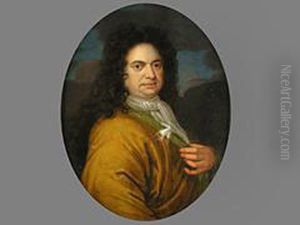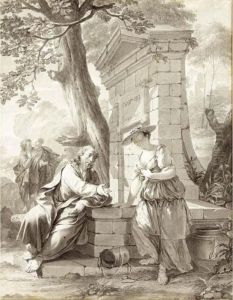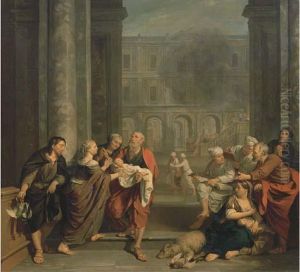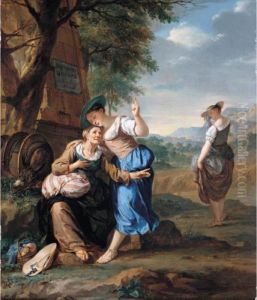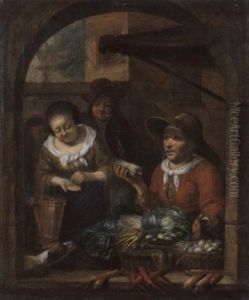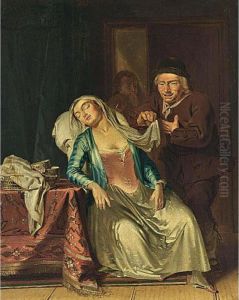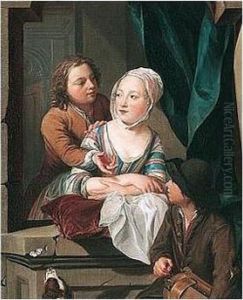Nicholas Verkolje Paintings
Nicolaes Verkolje, also known as Nicholas Verkolje, was a Dutch painter and mezzotint artist, born in Amsterdam on January 11, 1673. He is known for his refined portraits and genre scenes that reflect the elegance of the late Dutch Golden Age. Verkolje was the son of Jan Verkolje, a well-regarded painter and engraver, from whom he likely received his initial training.
Nicolaes developed a style characterized by a soft, elegant touch and a keen interest in the play of light and shadow, which he often used to enhance the textures and materials depicted in his works. He became a member of the Delft painters' guild in 1693 and soon established himself as a prominent artist in the city.
During his career, Verkolje specialized in painting portraits of the Dutch elite, as well as producing genre scenes, historical paintings, and allegories. His works exhibit a certain Rococo influence, which was becoming more popular in Europe at the time. He was also an accomplished mezzotint artist, a printmaking technique that allowed for the creation of images with a wide range of tones, which was particularly suited to his interest in subtle gradations of light.
Verkolje's art was appreciated for its delicate and graceful style, which stood in contrast to the more robust and dramatic works of some of his contemporaries. His ability to capture the texture of fabrics and the luminosity of skin contributed to his success as a portraitist.
Nicolaes Verkolje passed away on May 21, 1746, in Delft. His legacy continued through his sons, who also became artists. Today, his works are held in the collections of various museums, and he is remembered as a significant figure in the transition from the Dutch Golden Age to the more decorative styles of the 18th century.
